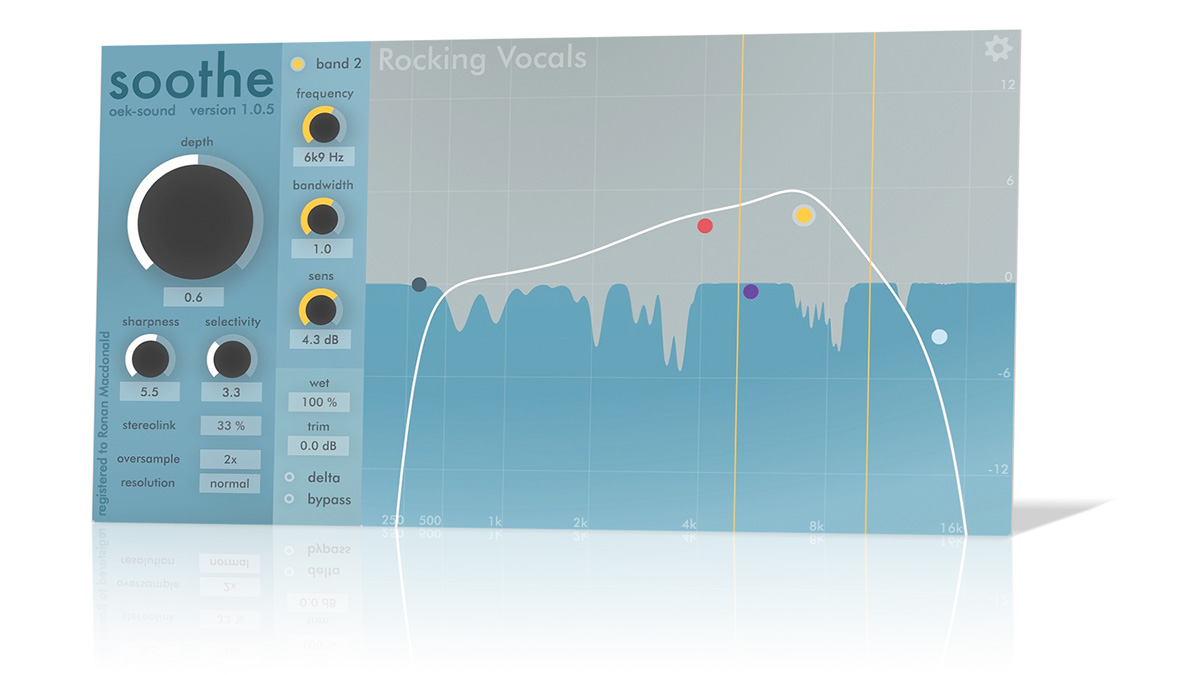Meet the programmers: oeksound
Check out how the developer behind Soothe gets his technological rocks off

With his first plugin as oeksound, Olli Keskinen has immediately broken the mould. Soothe is a plugin processor that sits somewhere between the realms of dynamic EQ and de-essing, but doesn't fall easily into either category.
As it turns out, Keskinen was a well qualified man even before he created Soothe, having history in both the world of DSP and in musical projects. We pinned him down and grilled him on the thinking behind the plugin and the future of oeksound.
What’s your background in music and in programming? How did Oeksound get started, and how would you describe the company’s philosophy?
"Compared to your typical developer, I'm quite a young guy, with a background and university-level education in both music technology and programming. I've done work ranging from creative coding and DSP algorithm consultancy to front-of-house engineering, and that together with an excessive amount of time spent with Matlab give me an interesting edge in DSP. Oeksound is about using that edge: Solving well-defined and laborious problems, while hiding the ugly stuff under the hood."
Soothe, your first plugin, is a “dynamic resonance suppressor”. Is this the same as a dynamic EQ or de-esser?
"In terms of use, Soothe is a close relative to dynamic EQ or de-esser, but under the hood it's a spectral processor that reacts to resonant signal components. So basically, it's an automatic notching EQ that fixes whistling and harsh frequencies based on their intensity, and with minimal user input."
What inspired you to create a tool like Soothe, seeing as there are already lots of de-essers on the market?
Get the MusicRadar Newsletter
Want all the hottest music and gear news, reviews, deals, features and more, direct to your inbox? Sign up here.
"User interaction with Soothe was designed to feel familiar to anyone who's used de-essers – you just set the threshold and the frequency range. But when an energetic mid- or high-frequency spike crosses the threshold, Soothe suppresses that frequency alone, and won't affect the adjacent frequencies. This way you don't lose the clarity or the top end of the material. Even when used as a de-esser, I think the versatility and possibility to control even the mids with minimum hassle is quite unique."
What kinds of source sounds does Soothe work best on?
"Soothe is great at taming the harshness and build-up of frequencies that's often present when close-micing audio sources, be they vocals, acoustic or electric guitar, woodwinds or violins. Due to the chaotic radiation patterns of the instruments, and multiplied by the pickup patterns of the microphones, nastiness is likely to be present when sticking a microphone few inches from a sound source.
"Soothe is at its best when used as the first line of defence to treat these problematic sound sources, saving the mixing engineer a lot of time and frustration trying to get the stuff to sit in the mix, especially with the lead parts."
What else can we expect from Oeksound in the next year or so?
"The first version of Soothe is just the beginning, and there's a lot of room for improvement. We're now improving Soothe's algorithm to make it more versatile, extending the workable frequency range to go lower, and reducing the CPU hit, especially at higher-resolution settings. So a lot of maths ahead. Also, the R&D for Soothe's spectral framework has opened an interesting set of applications and processes that we'll be checking out."


Computer Music magazine is the world’s best selling publication dedicated solely to making great music with your Mac or PC computer. Each issue it brings its lucky readers the best in cutting-edge tutorials, need-to-know, expert software reviews and even all the tools you actually need to make great music today, courtesy of our legendary CM Plugin Suite.










